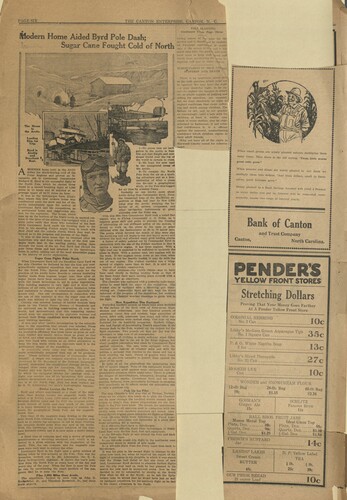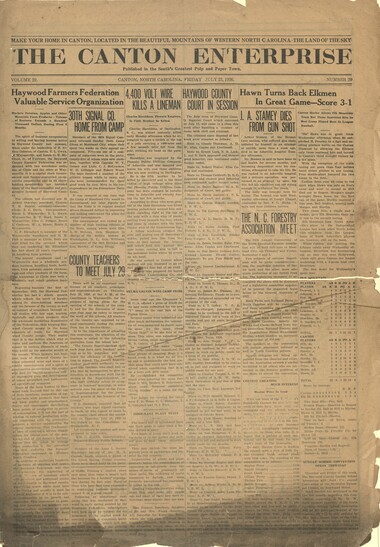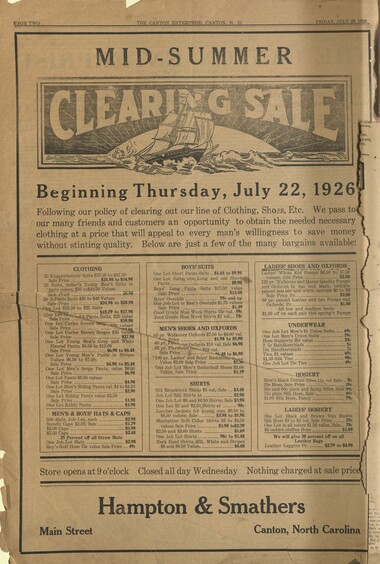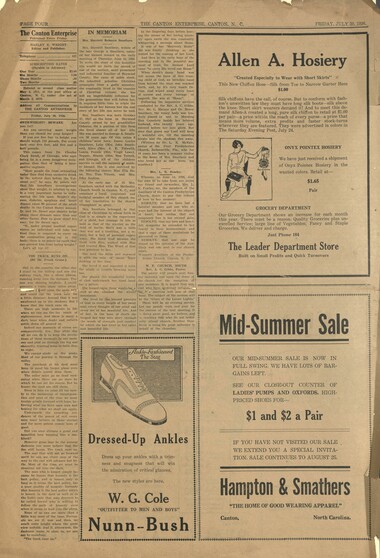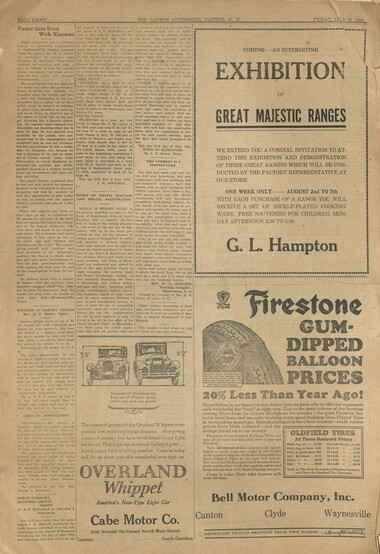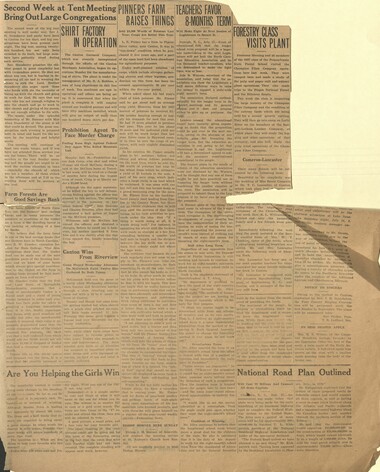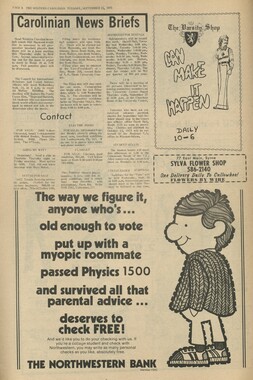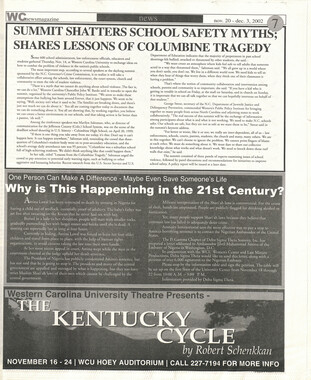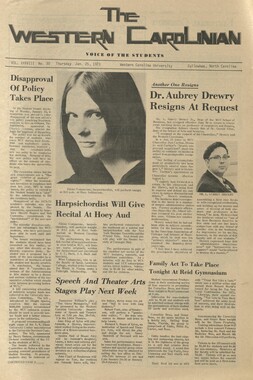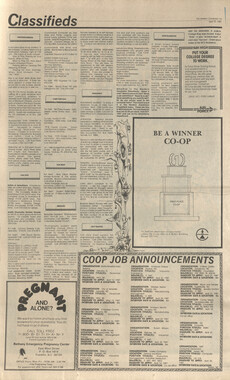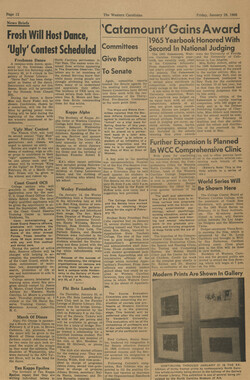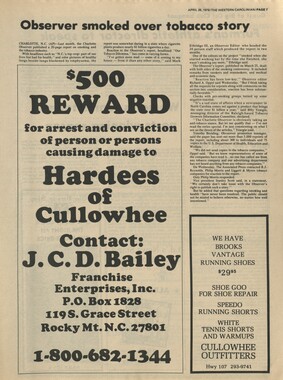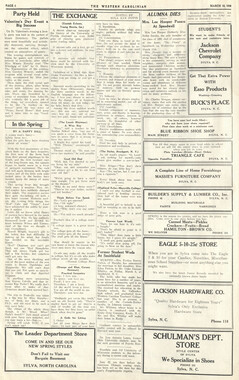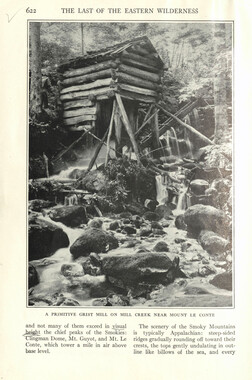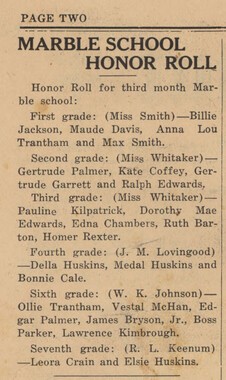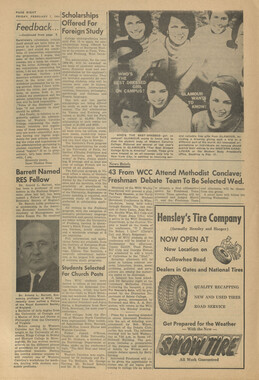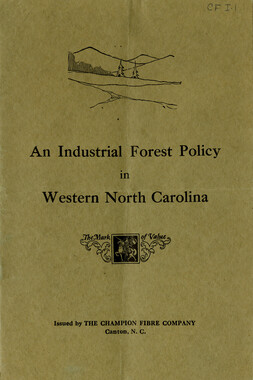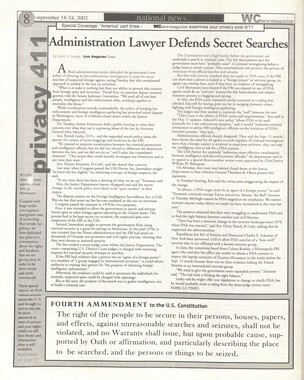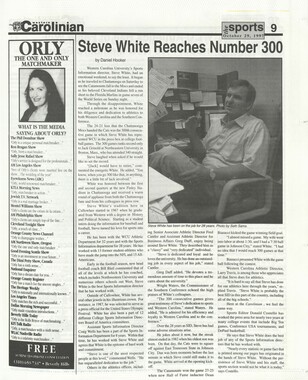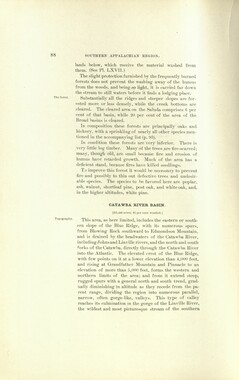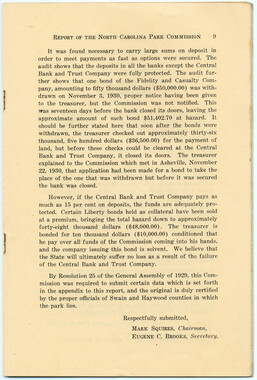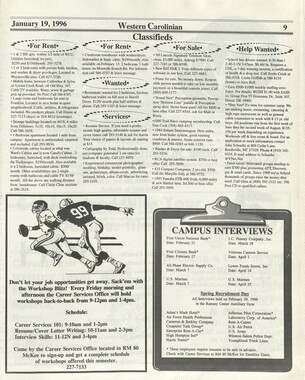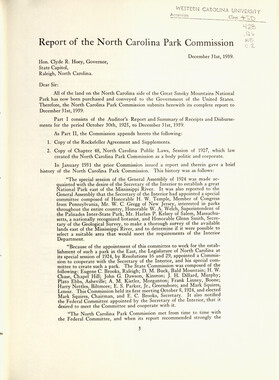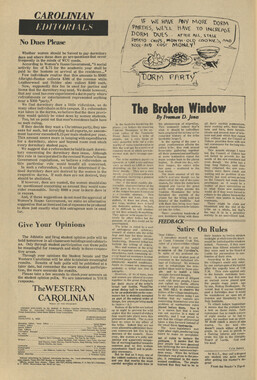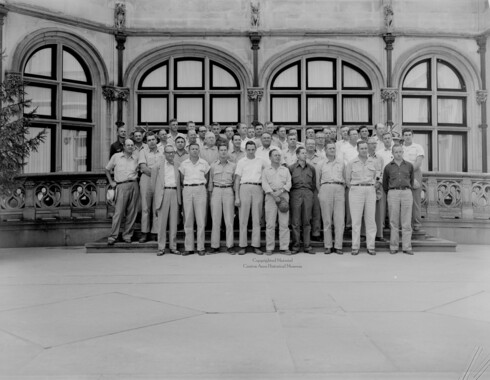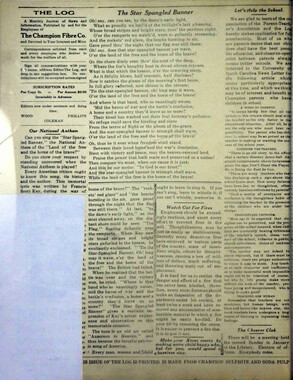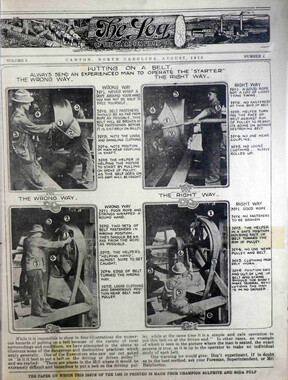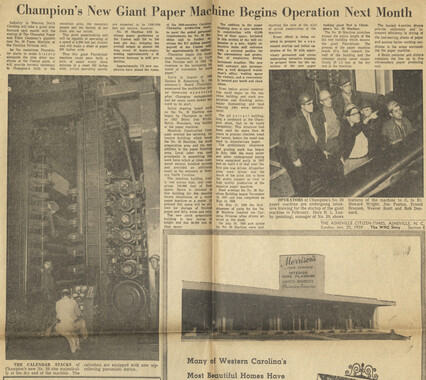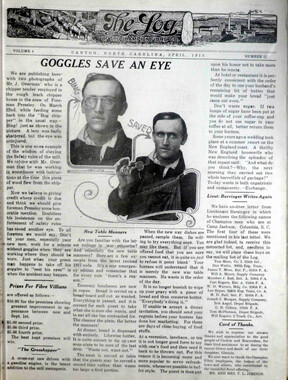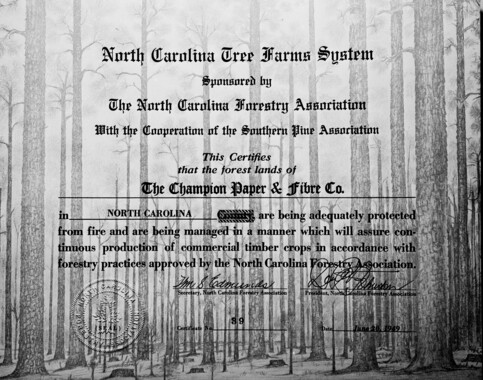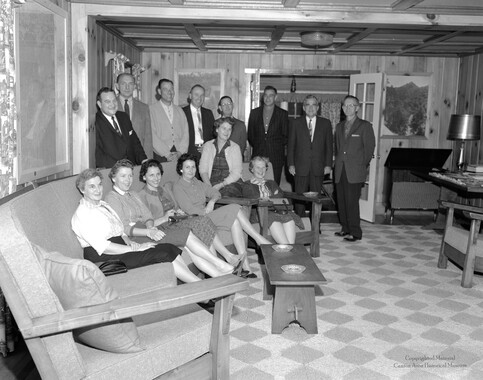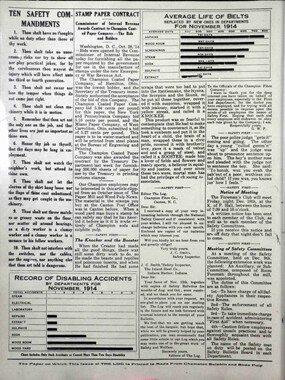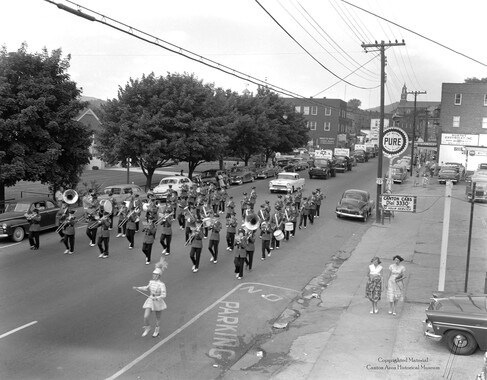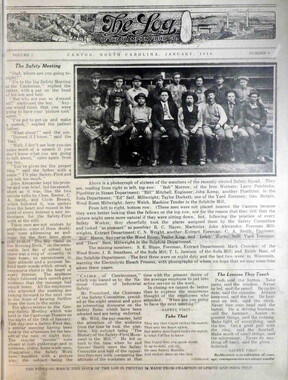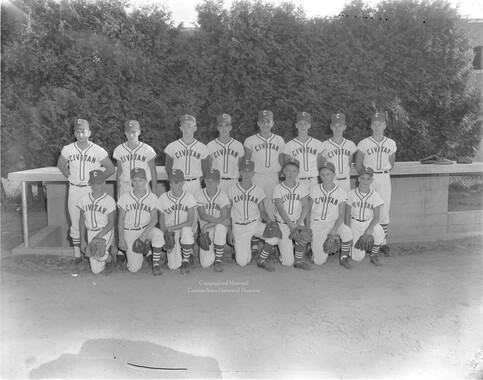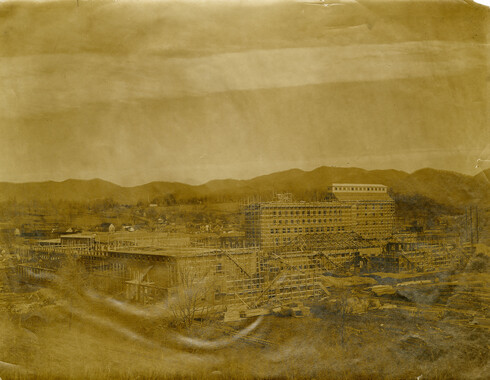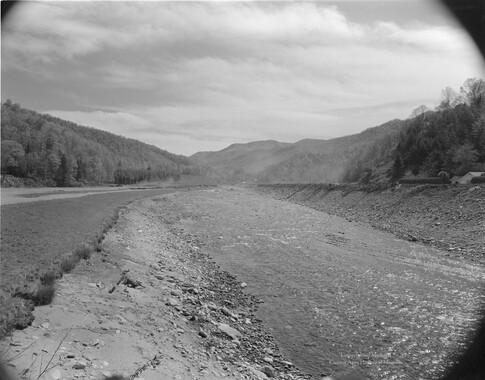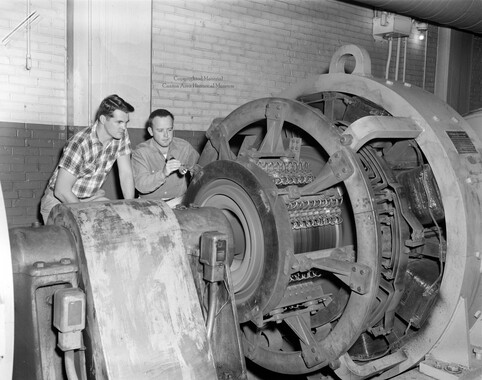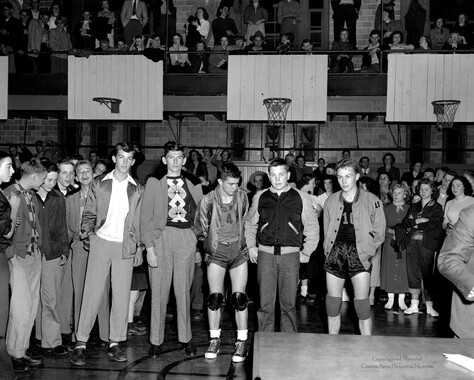Western Carolina University (20)
View all
- Canton Champion Fibre Company (2308)
- Cherokee Traditions (293)
- Civil War in Southern Appalachia (165)
- Craft Revival (1942)
- Great Smoky Mountains - A Park for America (2767)
- Highlights from Western Carolina University (430)
- Horace Kephart (941)
- Journeys Through Jackson (154)
- LGBTQIA+ Archive of Jackson County (24)
- Oral Histories of Western North Carolina (314)
- Picturing Appalachia (6772)
- Stories of Mountain Folk (413)
- Travel Western North Carolina (160)
- Western Carolina University Fine Art Museum Vitreograph Collection (129)
- Western Carolina University Herbarium (92)
- Western Carolina University: Making Memories (708)
- Western Carolina University Publications (2283)
- Western Carolina University Restricted Electronic Theses and Dissertations (146)
- Western North Carolina Regional Maps (71)
- World War II in Southern Appalachia (131)
University of North Carolina Asheville (6)
View all
- Champion Fibre Company (228)
- Champion Paper and Fibre Company (297)
- Allanstand Cottage Industries (0)
- Appalachian National Park Association (0)
- Bennett, Kelly, 1890-1974 (0)
- Berry, Walter (0)
- Brasstown Carvers (0)
- Cain, Doreyl Ammons (0)
- Carver, George Washington, 1864?-1943 (0)
- Cathey, Joseph, 1803-1874 (0)
- Cherokee Indian Fair Association (0)
- Cherokee Language Program (0)
- Crittenden, Lorraine (0)
- Crowe, Amanda (0)
- Edmonston, Thomas Benton, 1842-1907 (0)
- Ensley, A. L. (Abraham Lincoln), 1865-1948 (0)
- Fromer, Irving Rhodes, 1913-1994 (0)
- George Butz (BFS 1907) (0)
- Goodrich, Frances Louisa (0)
- Grant, George Alexander, 1891-1964 (0)
- Heard, Marian Gladys (0)
- Kephart, Calvin, 1883-1969 (0)
- Kephart, Horace, 1862-1931 (0)
- Kephart, Laura, 1862-1954 (0)
- Laney, Gideon Thomas, 1889-1976 (0)
- Masa, George, 1881-1933 (0)
- McElhinney, William Julian, 1896-1953 (0)
- Niggli, Josephina, 1910-1983 (0)
- North Carolina Park Commission (0)
- Osborne, Kezia Stradley (0)
- Owens, Samuel Robert, 1918-1995 (0)
- Penland Weavers and Potters (0)
- Rhodes, Judy (0)
- Roberts, Vivienne (0)
- Roth, Albert, 1890-1974 (0)
- Schenck, Carl Alwin, 1868-1955 (0)
- Sherrill's Photography Studio (0)
- Smith, Edward Clark (0)
- Southern Highland Handicraft Guild (0)
- Southern Highlanders, Inc. (0)
- Stalcup, Jesse Bryson (0)
- Stearns, I. K. (0)
- Thompson, James Edward, 1880-1976 (0)
- United States. Indian Arts and Crafts Board (0)
- USFS (0)
- Vance, Zebulon Baird, 1830-1894 (0)
- Weaver, Zebulon, 1872-1948 (0)
- Western Carolina College (0)
- Western Carolina Teachers College (0)
- Western Carolina University (0)
- Western Carolina University. Mountain Heritage Center (0)
- Whitman, Walt, 1819-1892 (0)
- Wilburn, Hiram Coleman, 1880-1967 (0)
- Williams, Isadora (0)
- 1890s (9)
- 1900s (110)
- 1910s (131)
- 1920s (127)
- 1930s (153)
- 1940s (187)
- 1950s (952)
- 1960s (291)
- 1970s (7)
- 1980s (1)
- 1600s (0)
- 1700s (0)
- 1800s (0)
- 1810s (0)
- 1820s (0)
- 1830s (0)
- 1840s (0)
- 1850s (0)
- 1860s (0)
- 1870s (0)
- 1880s (0)
- 1990s (0)
- 2000s (0)
- 2010s (0)
- 2020s (0)
- Appalachian Region, Southern (6)
- Asheville (N.C.) (17)
- Buncombe County (N.C.) (30)
- Cherokee County (N.C.) (10)
- Great Smoky Mountains National Park (N.C. and Tenn.) (2)
- Haywood County (N.C.) (2148)
- Henderson County (N.C.) (1)
- Jackson County (N.C.) (8)
- Macon County (N.C.) (1)
- Qualla Boundary (6)
- Swain County (N.C.) (6)
- Transylvania County (N.C.) (1)
- Waynesville (N.C.) (13)
- Avery County (N.C.) (0)
- Blount County (Tenn.) (0)
- Clay County (N.C.) (0)
- Graham County (N.C.) (0)
- Knox County (Tenn.) (0)
- Knoxville (Tenn.) (0)
- Lake Santeetlah (N.C.) (0)
- Madison County (N.C.) (0)
- McDowell County (N.C.) (0)
- Mitchell County (N.C.) (0)
- Polk County (N.C.) (0)
- Rutherford County (N.C.) (0)
- Watauga County (N.C.) (0)
- Yancey County (N.C.) (0)
- Aerial Views (5)
- Cards (information Artifacts) (2)
- Clippings (information Artifacts) (16)
- Envelopes (1)
- Manuscripts (documents) (5)
- Negatives (photographs) (1514)
- Newsletters (519)
- Photographs (161)
- Postcards (9)
- Publications (documents) (43)
- Slides (photographs) (41)
- Aerial Photographs (0)
- Albums (books) (0)
- Articles (0)
- Artifacts (object Genre) (0)
- Biography (general Genre) (0)
- Crafts (art Genres) (0)
- Depictions (visual Works) (0)
- Design Drawings (0)
- Drawings (visual Works) (0)
- Facsimiles (reproductions) (0)
- Fiction (general Genre) (0)
- Financial Records (0)
- Fliers (printed Matter) (0)
- Glass Plate Negatives (0)
- Guidebooks (0)
- Internegatives (0)
- Interviews (0)
- Land Surveys (0)
- Letters (correspondence) (0)
- Maps (documents) (0)
- Memorandums (0)
- Minutes (administrative Records) (0)
- Newspapers (0)
- Occupation Currency (0)
- Paintings (visual Works) (0)
- Pen And Ink Drawings (0)
- Periodicals (0)
- Personal Narratives (0)
- Plans (maps) (0)
- Poetry (0)
- Portraits (0)
- Programs (documents) (0)
- Questionnaires (0)
- Scrapbooks (0)
- Sheet Music (0)
- Sound Recordings (0)
- Specimens (0)
- Speeches (documents) (0)
- Text Messages (0)
- Tintypes (photographs) (0)
- Transcripts (0)
- Video Recordings (physical Artifacts) (0)
- Vitreographs (0)
- Canton Area Historical Museum (2110)
- Hazel Scarborough Collection (1)
- Norburn - Robertson - Thomson Families Collection (22)
- A.L. Ensley Collection (0)
- Appalachian Industrial School Records (0)
- Appalachian National Park Association Records (0)
- Axley-Meroney Collection (0)
- Bayard Wootten Photograph Collection (0)
- Bethel Rural Community Organization Collection (0)
- Blumer Collection (0)
- C.W. Slagle Collection (0)
- Carlos C. Campbell Collection (0)
- Cataloochee History Project (0)
- Cherokee Studies Collection (0)
- Daisy Dame Photograph Album (0)
- Daniel Boone VI Collection (0)
- Doris Ulmann Photograph Collection (0)
- Elizabeth H. Lasley Collection (0)
- Elizabeth Woolworth Szold Fleharty Collection (0)
- Frank Fry Collection (0)
- George Masa Collection (0)
- Gideon Laney Collection (0)
- Hiram C. Wilburn Papers (0)
- Historic Photographs Collection (0)
- Horace Kephart Collection (0)
- Humbard Collection (0)
- Hunter and Weaver Families Collection (0)
- I. D. Blumenthal Collection (0)
- Isadora Williams Collection (0)
- Jesse Bryson Stalcup Collection (0)
- Jim Thompson Collection (0)
- John B. Battle Collection (0)
- John C. Campbell Folk School Records (0)
- John Parris Collection (0)
- Judaculla Rock project (0)
- Kelly Bennett Collection (0)
- Love Family Papers (0)
- Major Wiley Parris Civil War Letters (0)
- Map Collection (0)
- McFee-Misemer Civil War Letters (0)
- Mountain Heritage Center Collection (0)
- Pauline Hood Collection (0)
- Pre-Guild Collection (0)
- Qualla Arts and Crafts Mutual Collection (0)
- R.A. Romanes Collection (0)
- Rosser H. Taylor Collection (0)
- Samuel Robert Owens Collection (0)
- Sara Madison Collection (0)
- Sherrill Studio Photo Collection (0)
- Smoky Mountains Hiking Club Collection (0)
- Stories of Mountain Folk - Radio Programs (0)
- The Reporter, Western Carolina University (0)
- Venoy and Elizabeth Reed Collection (0)
- WCU Gender and Sexuality Oral History Project (0)
- WCU Mountain Heritage Center Oral Histories (0)
- WCU Oral History Collection - Mountain People, Mountain Lives (0)
- WCU Students Newspapers Collection (0)
- Western North Carolina Tomorrow Black Oral History Project (0)
- William Williams Stringfield Collection (0)
- Zebulon Weaver Collection (0)
- African Americans (2)
- Artisans (1)
- Cherokee women (2)
- Church buildings (33)
- Dams (3)
- Dance (23)
- Education (115)
- Floods (6)
- Forest conservation (200)
- Forests and forestry (46)
- Great Smoky Mountains National Park (N.C. and Tenn.) (5)
- Hunting (6)
- Logging (8)
- Paper industry (32)
- Postcards (6)
- Railroad trains (14)
- Sports (429)
- Wood-carving -- Appalachian Region, Southern (1)
- World War, 1939-1945 (42)
- Appalachian Trail (0)
- Cherokee art (0)
- Cherokee artists -- North Carolina (0)
- Cherokee language (0)
- Cherokee pottery (0)
- Civilian Conservation Corps (U.S.) (0)
- College student newspapers and periodicals (0)
- Folk music (0)
- Forced removal, 1813-1903 (0)
- Gender nonconformity (0)
- Landscape photography (0)
- Maps (0)
- Mines and mineral resources (0)
- North Carolina -- Maps (0)
- Pottery (0)
- Rural electrification -- North Carolina, Western (0)
- School integration -- Southern States (0)
- Segregation -- North Carolina, Western (0)
- Slavery (0)
- Storytelling (0)
- Waterfalls -- Great Smoky Mountains (N.C. and Tenn.) (0)
- Weaving -- Appalachian Region, Southern (0)
- StillImage (1725)
- Text (584)
- MovingImage (0)
- Sound (0)
The Canton Enterprise Volume 22 Number 29
Item
Item’s are ‘child’ level descriptions to ‘parent’ objects, (e.g. one page of a whole book).
-
-
PAGE STX THE CANTON ENTERPRISE. CANTON. N. C. IHodern Home Aided Byrd Pole Dash; Sugar Cane Fought Cold of North & FALL PLANTING Continued From Page Three ason of tin. year for the ■n and it'should ao[ be neglected. ,,n is D i if the season is ■ lis, the grow«t wi|i have •d work to keep crab Hrass and i will pay in man;. TUBERCULOSIS IN MILK SUFFKK1N AND DEATH I ► *♦♦♦*«♦♦♦♦♦♦♦♦♦ » "X The House in the Arctic. Loading Ship for Trip. Byrd in Airship and Doughnut I Boat. A MODERN home built in the Arctic defied the death-dealing cold of the Polar Regions and proved an invaluable aid to Lieutenant Commander Richard E. Byrd in his successful flight to the North Pole, which he circled three times in a record breaking flight of 1,500 miles in 15 hours and 80 minutes at an average speed of 98.75 miles an hour. It was at the Spitzbergen base, King's Bay, where this first modern house was constructed amid the snow and lee of the Arctic immediately upon the arrival of Lieutenant Byrd and his companions, as a permanent home and observation station for the explorers. The house, which rose up on the horizon of the frigid north in marked contrast to the igloo oS the eskimo, was equipped with a complete radio outfit that those who remained at the base while Lieutenant Byrd made his thrilling dash to the Pole in his speeding Fokker might beep in touch with their chief and the outside world, which they kept informed as to the progress and success of the flight It was to this same home that he returned after his hazardous trip and from which some of the first messages were sent to the waiting public, telling them through the lanes of the air that Byrd had circled the pole three times and had returned to his Spitzbergen home in safety, adding one of the most memorable pages to the history of Arctic exploration. Sugar Cane Fights Polar North. When Lieutenant Byrd left the Brooklyn Navy Yard on the ship Chahtier he declared he had the best and most scientifically equipped expedition that ever had started for the North Pole. Special plans were made for the erection of his Arctic home. Boards ol celotex insulating lumber made from bagasse (sugar cane fiber after all sugar juices have been extracted) were carried along with the latest Inventions to aid In polar exploration. This building material is very light and is filled with millions of air cells, which give it great Insulation value and resistance to change In temperature, especially the severe cold. One odd circumstance in connection with the use of this material is that the sugar cane -of the south was utilized to fight the cold of the north. < 'elotex was selected Instead of lumber because tests made by the United States Bureau of Standards and its universal use In building construction all over the world, had demonstrated that this insulating lumber would keep the quarters of the explorers warmer and protect their living conditions more securely than ordinary building material. It was only after careful investigation by the scientific men in the expedition that celotex was selected. These authorities pointed out that the protection afforded by its insulation efficiency was three times as great as ordinary lumber and nearly twelve times as great as that of brick and other masonry material. The ship Chantier also was lined with celotex as an added precaution to keep the ship warm while the explorers used It in the preliminary stages of the expedition. In practically every "(her way this expedition was more scientifically prepared than any of its predecessors. These included inventions of Commander Byrd himself. A simple sun compass conceived by Byrd and Bumstead of the National Geographic Society, superseded the complicated German device, de. Veloped three years ago for Amundsen. The drift indicator also w.is Byrd's invention. The bubble sextant by which the navigator obtains his searings while in flight was am of tils Inventions. Still another scientic development was n quick method of telling when one is at the North Pole. This has been worked out by G. W. Llttlehales, the aavy's hydrographic engineer. Device Locates the Pole. Byrd and Others contributed to a chart of the magnetic linos flo card the magnetic North Pole, Which Is in Bolthla Laud, 1,2 ! south of the Pole. Between Bolthla Land and the Pole the campass points south instead of north and over much of the Arctic it is badly disturbed by the discrepancy of position be- the geographical North Pole "ml the magnetic North Pole. This charl of the magnetic lines, flowing to the magnetic North Pole, although it was far from complete, was such as to enable the navigator to tell in what direction the compass should point from any spot in the Arctic. With this knowledge, the erratic behavior of the compass becomes orderly and It is once again a useful instrument. A third type of compass used was a device of Infinite sensitiveness—a revolving electrical coil, which is ad- Justed to a given relation with the magnetism of the earth. This, the sun compass, and the magnetic compass were each used to correct the other. Lieutenant Byrd in his flight used a quick method of telling when he was actually at the Pole. This was the Invention worked out by Mr. Llttlehales, the U. S. Navy hydrographic engineer. It shows the sun's position from the North Pole at every hour of the day and every day of the year. When the flyer is near the Pole ne can, by ascertaining the exact position of the sun, prove that he is near the Pole. Flies 3,000 Miles Over Arctic. The expedition, backed by such men as John D. Rockefeller, Jr., and Theodore Boosevelt, Jr., had three main objects. 1—To prove that air navigation in the Arctic is feasible and that freight and messenger travel over the top of the world is certain to come. 2—To hunt for new land In the unexplored areas of the Arctic. 3—To conquer the North Pole from the air as a sporting adventure and as a demonstration of what a plane can do—not a geographical study, as the Pole was bagged for all time by Admiral Peary. Probably no one knows more about Arctic flying than Commander Byrd. From the Greenland base of the MacMlllan expedition at Etah last year he flew 3,000 miles over the Arctic, studying the behavior of oil, motors, compasses, and other navigation instruments at great altitudes over the Polar sea. With him this time Commander Byrd took a noted fuel expert, who is Flying Commander G. O. Noble, as it requires great skill and pains to prevent the freezing of lubricating oil and stiffened action of the motors, if forced to work on the plane in the open at great altitudes with the thermometer at 60 to 70 below zero. The points which favored the month of May were that the Arctic fog had not begun to rise and heavy snows still covered the land r-nd afforded many good landing places. A factor of safety pointed out by Commander Byrd in connection with the use of the Fokker machine Is that It carries a reserve engine. It has three engines. With ■ light load one is expected to be sufficient to maintain the plane in flight. With a normal load, two engines will do the work. If two engines break down at one time, when the plane is not too heavily loaded, it may fly with the use of one engine. The Fokker machine has a wing- spread of slightly more than 64 feet. It is said to be a marvel of airship construction. The other airplane—the Curtis Oriole—was to have been used chiefly In finding landing fields so that if the fliers found their main landing place covered with a fog they might go elsewhere. The Chantier was equipped with a powerful radio transmitter to send back the news of the expedition. The Fokker also is equipped with a receiving i^nd transmitting set. Commander Byrd not only kept the world Informed of the progress of the expedition, but received through the Chantier weather warnings to guide him In his flight. How Expedition Was Equipped. Forty-five hundred pounds of whole beef were Included In the rations of the Byrd crew of forty-seven fliers, seamen and technicians. Also four hundred pounds of pemmican (meat fats and raisins), huge quantities of bacon, dried milk, erbswurst (pea soup) and other supplies In proportion were carried along. Cod liver oil was included for its healthful properties. Herbert Griggs, who had charge of provisioning Peary's expedition in his famous dash to the Pole, worked out the rations for the Byrd explorers. Two pounds per man per day was the allowance to take care of all emergencies. No amount of clothing is really sufficient when flying 1,000 or more feet in the air In the Polar regions, but every possible precaution was taken by Commander Byrd against exposure. The men were equipped with the warmest and lightest of reindeer suits and with fur parkas, a garment that reaches to the knees and has a hood covering the head. Plenty of goggles were found to be an absolute necessity to protect them against the glare of the snow. In spite of all the precautions the undertaking was full of unseen danger. None of this equipment would be of the slightest avail against some unexpected and unprecedented situation which might arise. There is always the danger of snowbllndness, exhaustion, freezing, some mishap to the engine. Lieutenant Byrd and his companions, however, were particularly fortunate in escaping with practically no III effects except the exhaustion due to such a perilous trip. Pick Up Ice Pilot. The ship Chantler's first stop was at Tromso, Norway, where an ice skipper was taken on to pilot the Chantier and its crew through the ice-filled waters around Spitzbergen to King's Bay, where preparations for the first flight to the Pole were made. The planes, the instruments and the various oil mixtures used In connection with the airship tests, were carefully examined and tested. Lieutenant Byrd's original plans called for six flights as follows: 1—A 400-mile flight from Spitzbergen to Peary Land to unload oil, provisions and equipment at a place that looks promising for a landing. 2—A 400-mile flight back to Spitzbergen. 3—A second 400-mile flight from Spitzbergen to Peary Land base with further food, fuel and equipment. 4—An 850-mile flight to and around the Pole and back to the Peary base. 5—An 800-mile round trip flight to the northwest over unexplored areas in search of new lands. 6—A 400-mlle flight from the Peary Laud base back to Spitzbergen. It was his plan In his second flight to attempt to discover new land, but when he received the report of the flight of Amundsen in his dirigible, In which it was stated that the Norge had failed to find any trace of new land, Lieutenant Byrd decided to abandon further flights and the trip over land on sleds he had planned In his search for new land in unexplored areas. Now he has decided to try to accomplish by airship at the South Pole what he did at the North. As he left the Spitzbergen base he stated that he would have Just as well an equipped expedition for his southern flight as he had In his recent adventure in the North. There is an importai si|ii' to the milk question which inns! not be ignored. We may have the right ubtful right, to be ev id neglect the dangers to which we, as adults capable of judging and acting for ourselves, are exposed: but we have absolutely no right u>\ neglect conditions that cause suffering and death among children. The failure to act. and to act quickly an unceasingly, until a safe milk for children, at least, is within easy reach of every mother, may be characterized as barbarous, if not criminal Indifference. It is a offense against the innocent, unquestioning confidence which children repose in their adult friends. Why not have all of the caltle in Haywood County tested for tuberculosis? : : When small grains are wisely planted natures multiplies them ".any times. Then there is the old saying: "From little acorns great oaks grow." "hen pennies and dimes are wisely planted in our bank we multiply them into dollars. "And from dollars, small in them- I selves, great fortunes grow." ■Money planted in a Bank Savings Account will yield 4 Percent on every dollar you put in. Interest will be computed .semiannually, means two crops of interest yearly. Bank of Canton Canton, >♦♦♦♦♦»♦♦♦♦♦♦♦♦♦»♦♦♦ and Trust Company North Carolina. RENDERS YELLOW FRONT STORES Stretching Dollars Proving That Your Money Goes Farther At A Pender Yellow Front Store COLONIAL HERRING No. 2 Can 10c Libby's Medium Green Asparagus Tips r» g* No. 1 Square Can 0<£> P. & G. White Naptha Soap 3 for 13c Libby's Sliced Pineapple No. 21 Can HOOKER LYE Can : WONDER and SNOWCREAM FLOUR 12.-lb Rag 24-lb. Bag 48-lb Bag 59c $1-15 $2.24 GQSMAN'S Ginger Ale 15c SCHLITZ Famous Brew lie Mason Metal Top Pints, Doz. 80c Quarts, Doz. 90c I Gal. Doz $1.25 BALL BROS. FRUIT JARS FRENCH'S MUSTARD Jar Ideal Glass Top Pints, Doz. 95c Quarts, Doz $1.10 I Gal. Doz §1.50 LAND O' LAKES Sweet Cream BUTTER 45c OUR PRIDE BREAD 21 ounce Loaf
Object
Object’s are ‘parent’ level descriptions to ‘children’ items, (e.g. a book with pages).
-
The Canton Enterprise (19??–1971) was published in Canton, North Carolina by the Canton Publishing Company. Its preceding title was The Canton Observer (circa 1900-), and succeeding title was The Enterprise (1971-1996).
-

